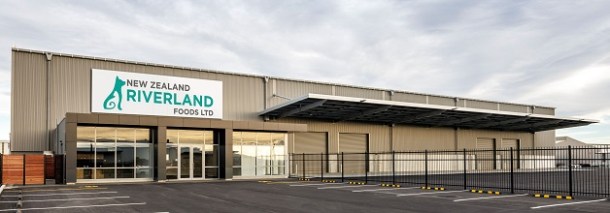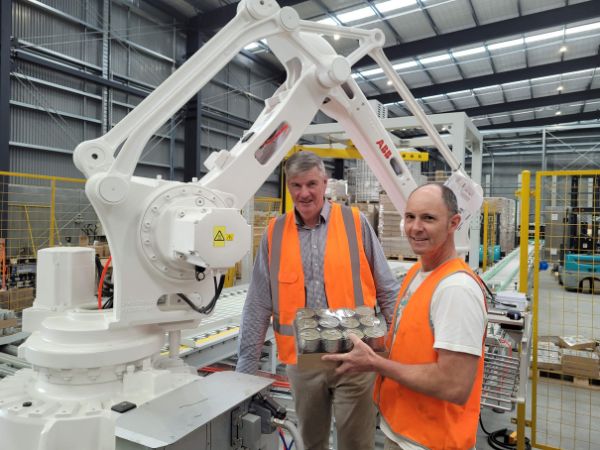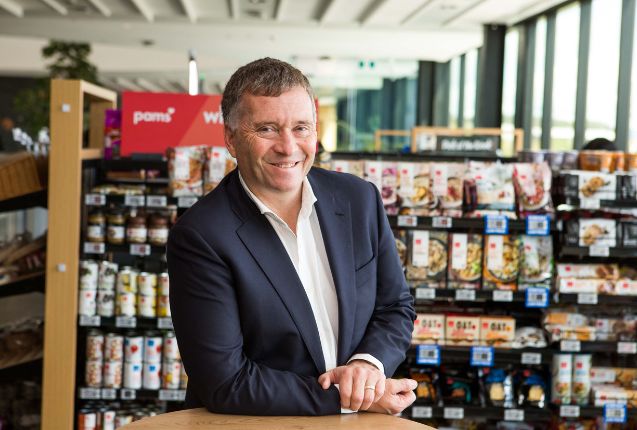Global pet food brands starved of opportunities to manufacture in New Zealand will soon have access to a new state-of-the-art canning facility.
Built by an experienced team of pet food entrepreneurs, the ultra-modern Canterbury factory will each year make 30 million cans of high-value cat and dog food, adding significantly to an industry generating over $NZ300 million in exports annually.
Set to open next month, the plant established by Riverlands Foods Limited is a first for New Zealand. It will produce exclusively for their clients’ brands, removing a logjam that limited New Zealand as a go-to destination for third-party manufacturing.

While other plants exist, they’re either very small, running at full capacity making their own brands, or in long-term contracts for a small number of large clients, meaning smaller and innovative brands can’t make their pet food in New Zealand.
“Not producing our own brand gives us a real point of difference. All customers are treated equally. It also provides us with flexibility to meet the changing market demands such as different product textures and formulations,” Michael Dance, General Manager of Riverland Foods, says.
New Zealand is known for its high-class ingredients and strong country brand and reputation, leaving pet food companies frustrated they couldn’t make product here.
Dance and colleagues, all veterans of the pet food industry, spied the manufacturing gap in New Zealand, so in 2022 began developing plans for the Hornby facility.
“With global sales of cat and dog food at $US58 billion ($NZ95 billion) predicted to more than double by 2030, there is huge demand for access to modern manufacturing facilities which are both adaptable and innovative,” Dance adds.
“Initial investment in the project exceeds $NZ30 million but further funds are committed for future staged development.”
Alongside Dance, the team driving Riverlands includes Head of Operations Tom Coughlan, Quality Assurance Officer Sarah Morris, and Site Manager Chris Gourlie.
Coughlan, Dance and Gourlie are all former managers of New Zealand pet food company Ziwi.
Coughlan, who ran a meat processing business before switching to pet nutrition, is looking forward to providing high-quality cat and dog food made from the best ingredients in the South Island.
“We chose Christchurch because of its proximity to processing plants and quality raw materials,” Coughlan says, adding that mainly rural Canterbury is a strategic location for New Zealand’s top meat processors.
Boosting value-added exports
Dance said that over 95% of the plant’s output will be sent overseas, boosting value-added exports and aligning with the coalition government’s aim for New Zealand to become an “export powerhouse” by focusing on an economy that enables wealth creation and maximises added value before exporting.
Petfood manufacturing has been identified by consecutive governments’ reports as a high emerging growth industry within the food and beverage sector[1].
Commissioned by MBIE, the 2021 Coriolis report concluded New Zealand’s pet industry had low production costs, high productivity people and farming systems, and was located close to growth markets in Australia and Asia.
“Riverland Foods is leveraging this growth, working alongside pet food technicians to create new recipes and textures for products while engaging with researchers and nutritionists to ensure all decisions are based on quality data and science,” Dance said.
“A key point of difference is our in-house research and development kitchen for testing product concepts cost-effectively and quickly before scaling up to commercial production. “
Another Riverlands’ advantage is its ability to quickly adjust recipes as demand changes for cat food, with various cats preferring different textures such as mousse, pate or chunky-with-gravy styles.
All of these textures have a different ‘mouth feel’ and for cats that’s really critical, Dance says.
“Because cats can whimsically change whether they like a texture or not, a cat will stop eating one texture in preference to another, forcing the pet food company to stock a range of textures – or they lose a customer.
“Riverlands’ ability to make many different textures gives brand owners the opportunity to hold on to their customers within their brand.”
Dance says Riverlands is attending global trade shows, in discussion with brand owners in North America, Asia and Australia to manufacture their products, and a member of the New Zealand Pet Food Association.
Pet Food Association Executive Director Richard Brake said the addition of world-class production capacity is very welcome.
Pet food exports have quadrupled in less than a decade, increasing from $75 million a year in 2014 to $320 million in 2023.
“Retail-ready petfood exports have been growing very strongly for some time. Growth is at 17.4% into North America and 25.3% into Asia,” Brake says.
“A recent plateau in exports was caused by production capacity constraints and most recently the effects of Cyclone Gabrielle on East Coast manufacturers, but the addition of Riverlands’ factory will further boost New Zealand pet food exports.”
_______________________________________
[1] Taking New Zealand Pet Food Exports to a Billion — Coriolis Research



